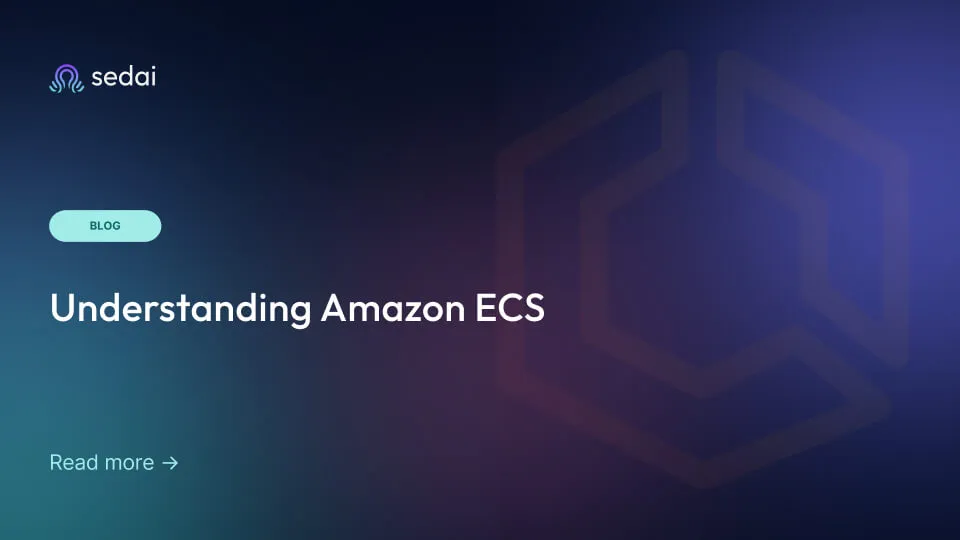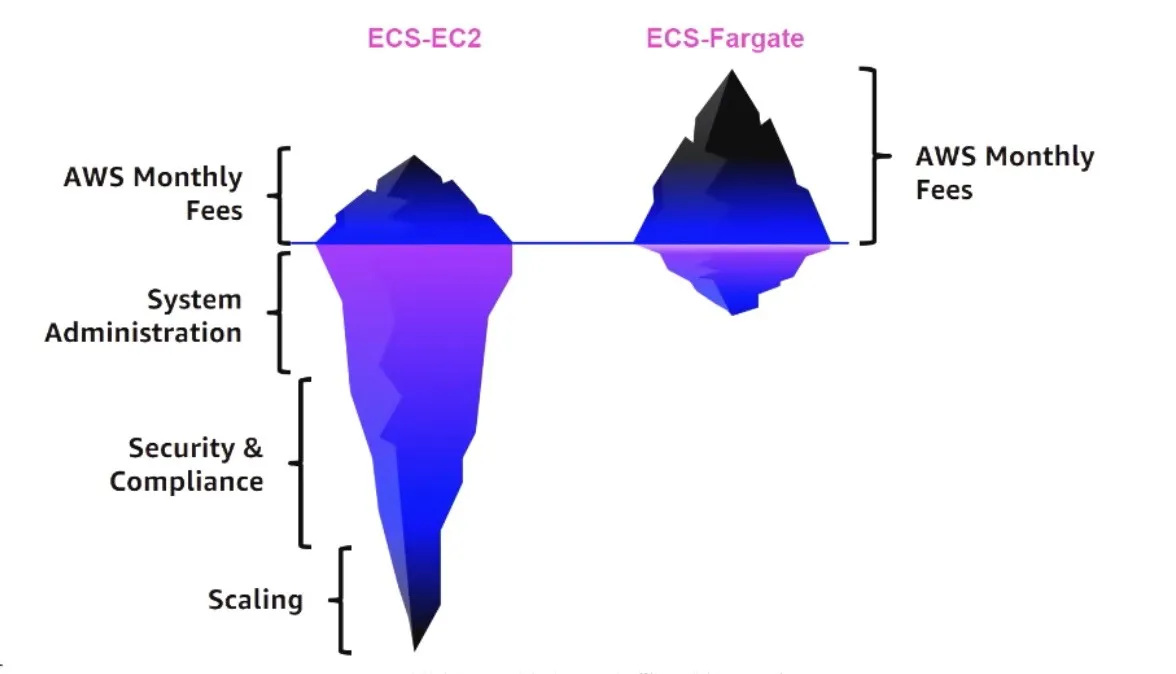Unlock the Full Value of FinOps
By enabling safe, continuous optimization under clear policies and guardrails

In this post we'll take a look at ECS vs other Amazon Compute models and some key concepts in Amazon ECS.
ECS is a widely used container platform; here are the numbers previously shared by Amazon about ECS at re:Invent:
Amazon Web Services (AWS) operates on a shared responsibility model, where the cloud service provider, Amazon, manages certain components of the cloud infrastructure, while users are responsible for managing other specific aspects. The degree of user involvement varies based on the compute model selected. Here, we explore four of Amazon's compute models, ranked from the most to the least user effort required.
The table below covers what AWS and you are expected to manage in each of the four models:

So if you look across all these compute models, they all expect development teams to still manage a number of tasks. Questions you are faced with can include:
So there are a lot of challenges that application teams face when they manage their applications.
Amazon Elastic Container Service (ECS) is designed to facilitate scalable and efficient container orchestration. Here's a brief overview of its three core layers:

Amazon Elastic Container Service (ECS) offers a powerful solution for orchestrating containerized tasks and services. To grasp its core concepts and functionalities, let's delve into the fundamental components that make up ECS:

As shown below, ECS tasks are deployed as Services that can be horizontally scaled. And if it's EC2-based you deploy it on a cluster to access sufficient EC2 capacity. If it's Fargate, it's simpler - Fargate resources are used, and you don’t need to worry about the additional complications of EC2.

When choosing a launch type for deploying applications on Amazon Elastic Container Service (ECS), it's crucial to understand the differences between the available options—EC2 and Fargate.
EC2 provides granular control over your instances and is cost-effective for predictable workloads, requiring manual setup and scaling. In contrast, Fargate offers a simplified, serverless experience with automated scaling, making it ideal for unpredictable workloads and minimizing operational overhead.
Below is a detailed comparison table that lays out these differences, helping you decide which launch type aligns best with your specific application needs and operational strategy.
AWS notes that while the headline costs of Fargate are more than EC2, there are less obvious costs to consider in deciding on the best model including system administration, security and compliance and scaling as shown below.

May 10, 2024
December 5, 2024

In this post we'll take a look at ECS vs other Amazon Compute models and some key concepts in Amazon ECS.
ECS is a widely used container platform; here are the numbers previously shared by Amazon about ECS at re:Invent:
Amazon Web Services (AWS) operates on a shared responsibility model, where the cloud service provider, Amazon, manages certain components of the cloud infrastructure, while users are responsible for managing other specific aspects. The degree of user involvement varies based on the compute model selected. Here, we explore four of Amazon's compute models, ranked from the most to the least user effort required.
The table below covers what AWS and you are expected to manage in each of the four models:

So if you look across all these compute models, they all expect development teams to still manage a number of tasks. Questions you are faced with can include:
So there are a lot of challenges that application teams face when they manage their applications.
Amazon Elastic Container Service (ECS) is designed to facilitate scalable and efficient container orchestration. Here's a brief overview of its three core layers:

Amazon Elastic Container Service (ECS) offers a powerful solution for orchestrating containerized tasks and services. To grasp its core concepts and functionalities, let's delve into the fundamental components that make up ECS:

As shown below, ECS tasks are deployed as Services that can be horizontally scaled. And if it's EC2-based you deploy it on a cluster to access sufficient EC2 capacity. If it's Fargate, it's simpler - Fargate resources are used, and you don’t need to worry about the additional complications of EC2.

When choosing a launch type for deploying applications on Amazon Elastic Container Service (ECS), it's crucial to understand the differences between the available options—EC2 and Fargate.
EC2 provides granular control over your instances and is cost-effective for predictable workloads, requiring manual setup and scaling. In contrast, Fargate offers a simplified, serverless experience with automated scaling, making it ideal for unpredictable workloads and minimizing operational overhead.
Below is a detailed comparison table that lays out these differences, helping you decide which launch type aligns best with your specific application needs and operational strategy.
AWS notes that while the headline costs of Fargate are more than EC2, there are less obvious costs to consider in deciding on the best model including system administration, security and compliance and scaling as shown below.
